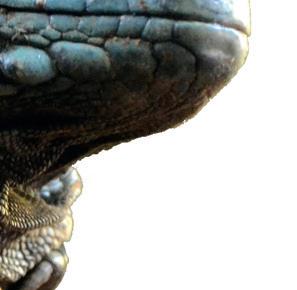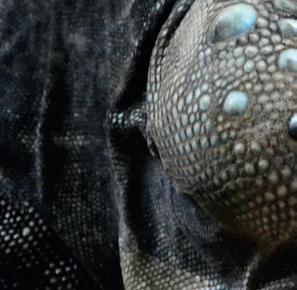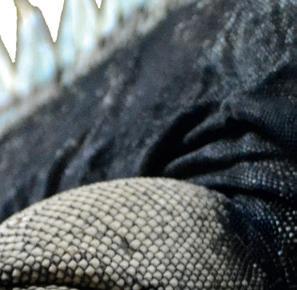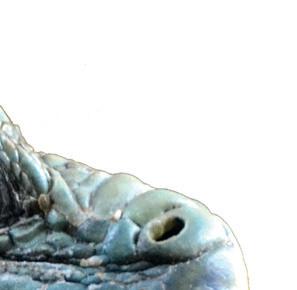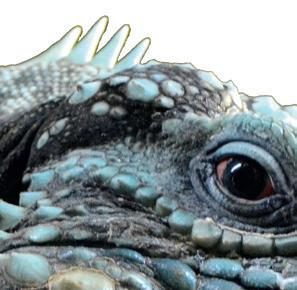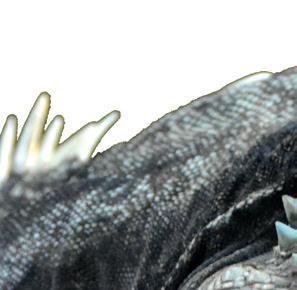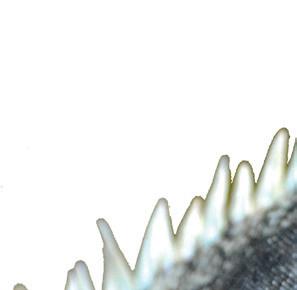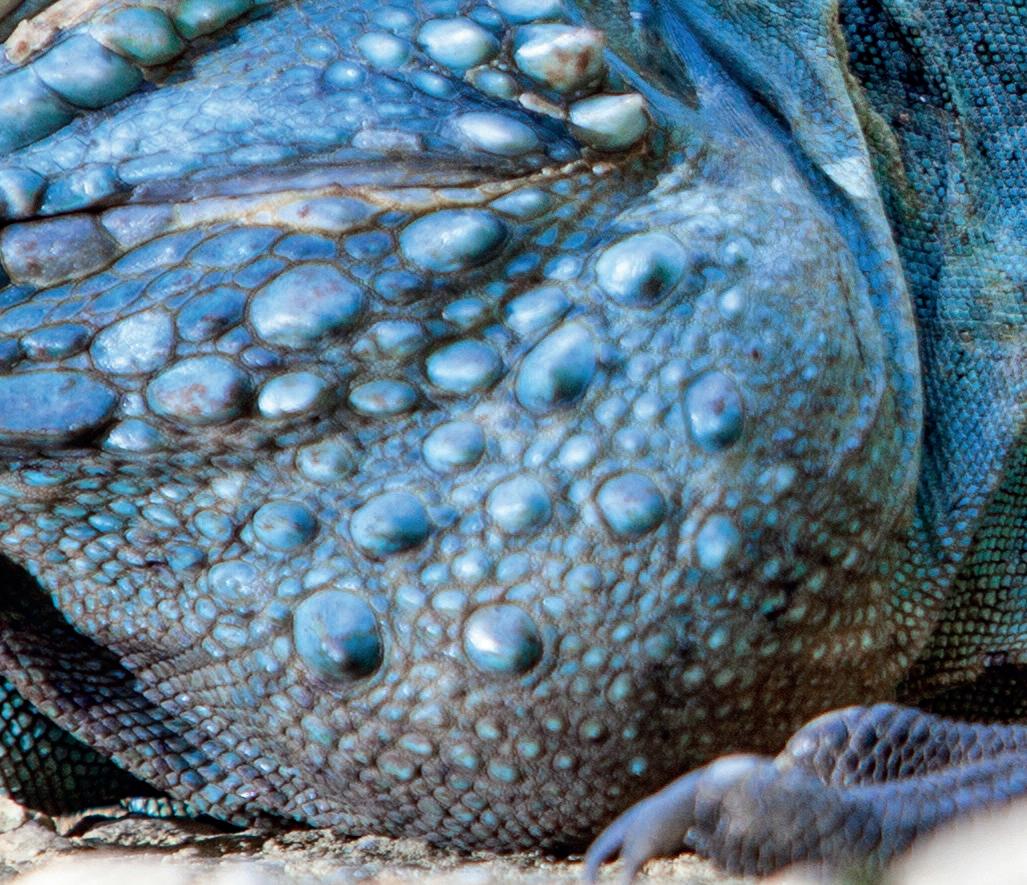
5 minute read
DID YOU KNOW?
From egg to adult
Like any breeding project, getting the animals to mate is only the start. When the stakes are raised in such a way that a species’ future depends on the project itself, understanding the optimum conditions for breeding, incubation and release becomes more important than ever. After 30 years of breeding blue iguanas and learning which methods suit the preservation of the species and the limitations of the available resources best, Blue Iguana Conservation have created a very successful model.
Advertisement
measured and photographed before being housed individually. Other hatchlings are also weighed, measured and photographed, before being placed into larger holding cages where they will be group-reared within their clutches. All hatchlings are offered fresh food (lots of flowers, fruit and soft leaves) and fresh water daily and their housing is cleaned daily to maintain best practice husbandry standards; weights and measurements are recorded monthly.”
Grand Cayman is the largest of the three Cayman Islands. It is approximately 76 miles squared and is located 275 miles South of Cuba and 275 miles North of Jamaica.
Grand Cayman has a stable temperature all year round, consistently averaging between 25°C and 30°C with seasonal rain.
Luke explained: “Our blue iguana eggs are most commonly incubated artificially in order to increase the survival rate from the outset once they emerge as hatchlings. The new hatchlings remain outside of their eggs but still in the incubator for about 7-10 days before we bring them to their holding cages at the Blue Iguana Conservation facility. Hatchlings from targeted pairs (those of higher genetic importance, if you will) are weighed,
“We are informed which animals and when and where they are to be released by the studbook keeper for the Grand Cayman blue iguana, who is based at San Diego Zoo Wildlife Alliance’s Institute of Conservation Research. We are able to release specific individuals into any of our three protected areas depending on the volume of representation of that genetic line already in a specific area. Hatchlings that are more genetically important are kept for several years in order to either become breeding animals at the facility or to be released at a later date. Iguanas that do not need to stay in captivity can only be released when they reach a weight of a minimum 800 grams, pass a veterinary assessment including blood and faecal samples, carry out a stint in quarantine and they are tagged with both a microchip and identification beads prior to release. Post-release monitoring is critical to learning about the success of releasing any species, therefore the other half of conserving blue iguanas is fieldwork, which includes annual census surveys, regular protected area habitat monitoring (i.e., to check for illegal logging and other activity on the land) and observations of both wild and released blue iguanas.”
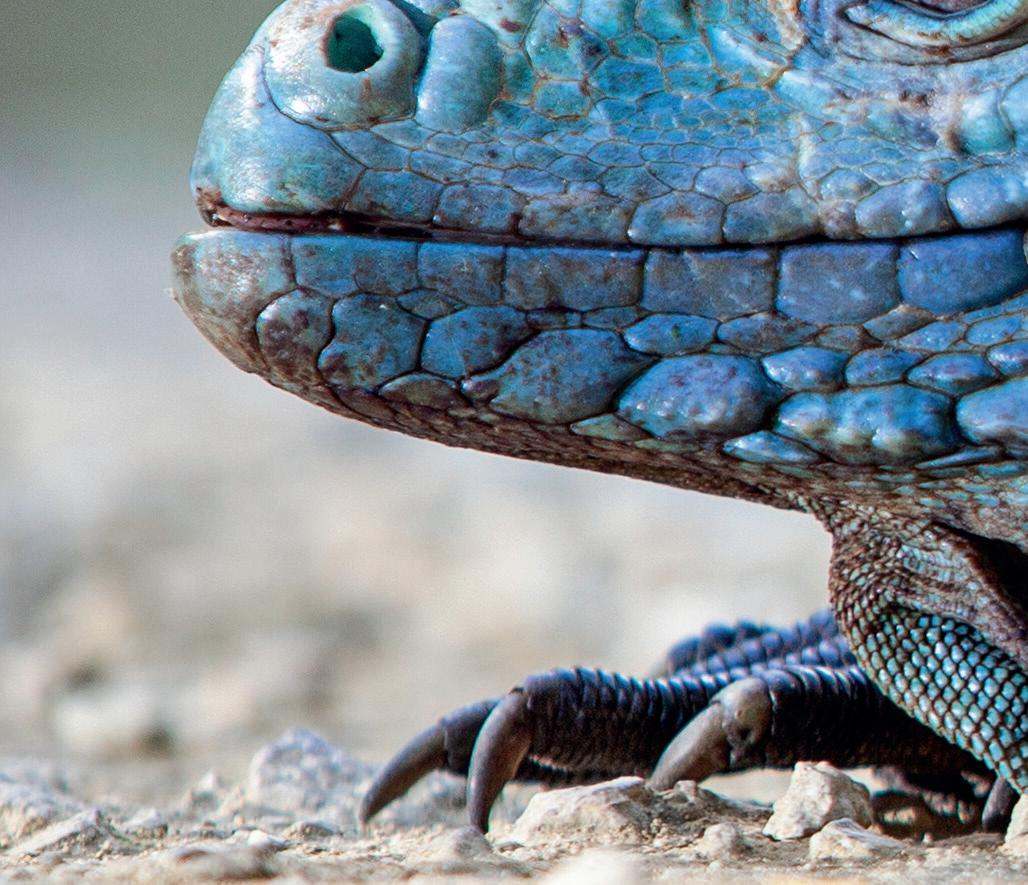
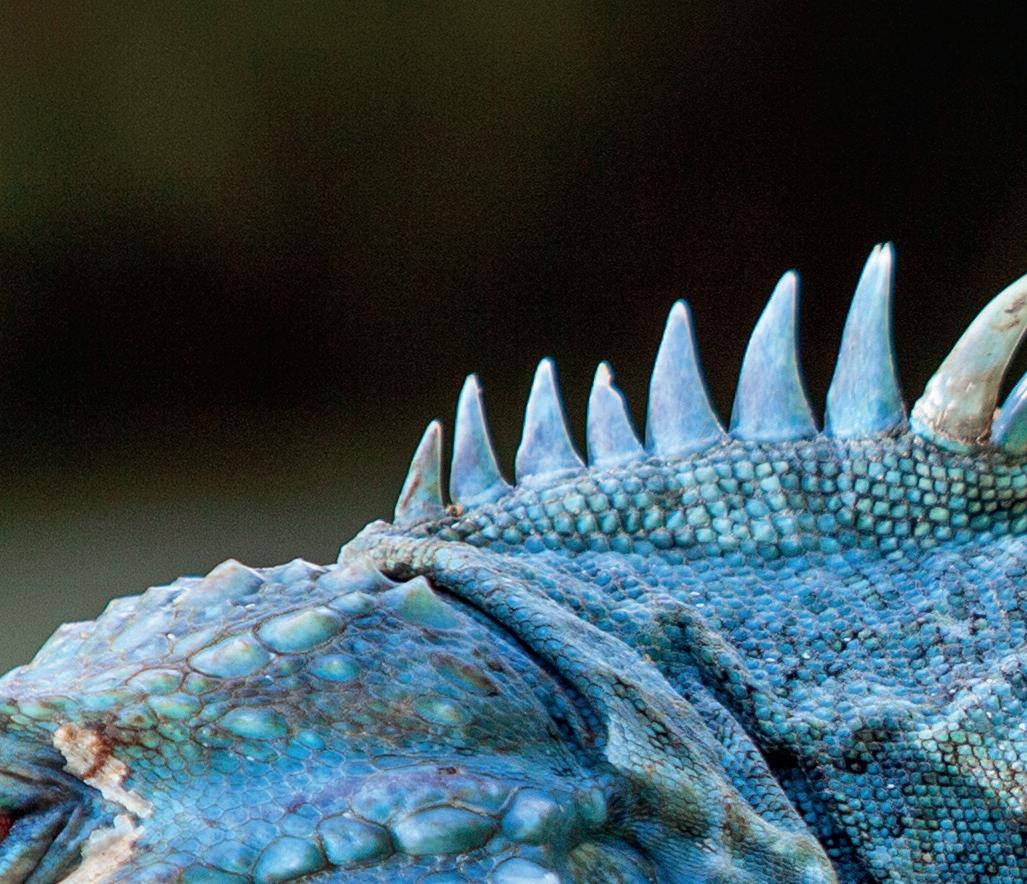
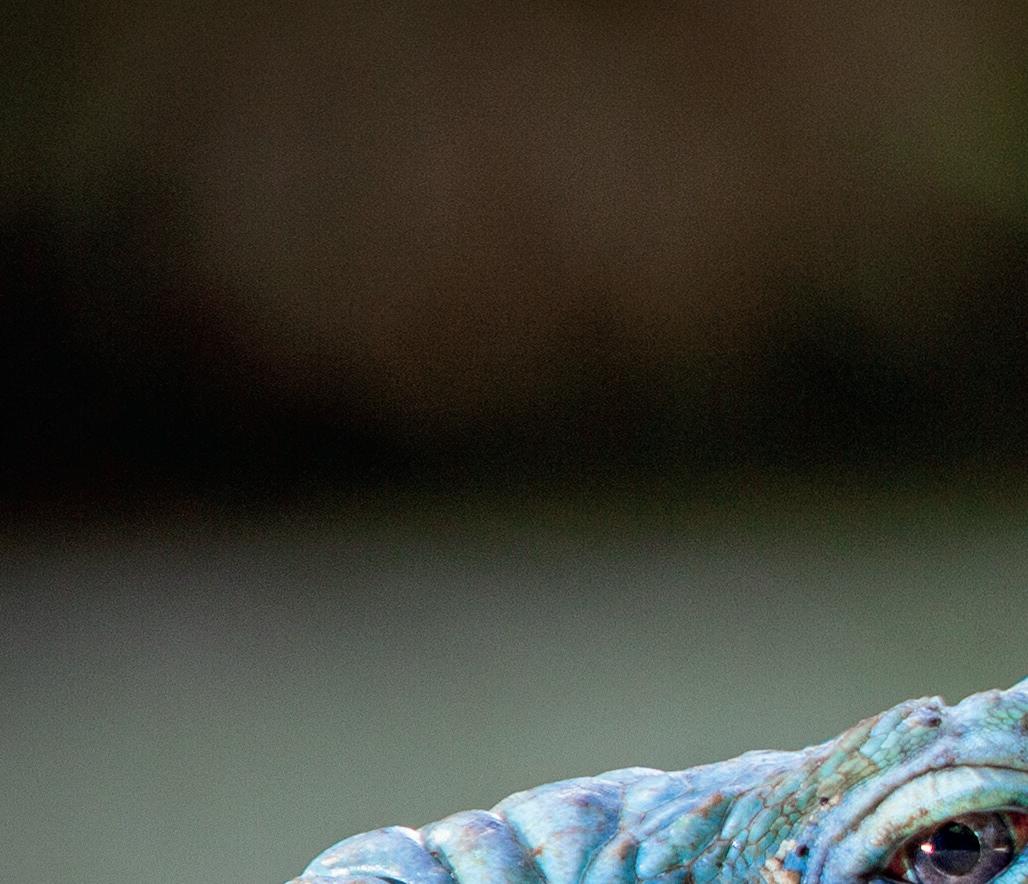
The Cayman Islands are an Englishspeaking British overseas territory. They also invite foreign ownership of property, meaning development across the island is happening quickly, much to the detriment of the local fauna.

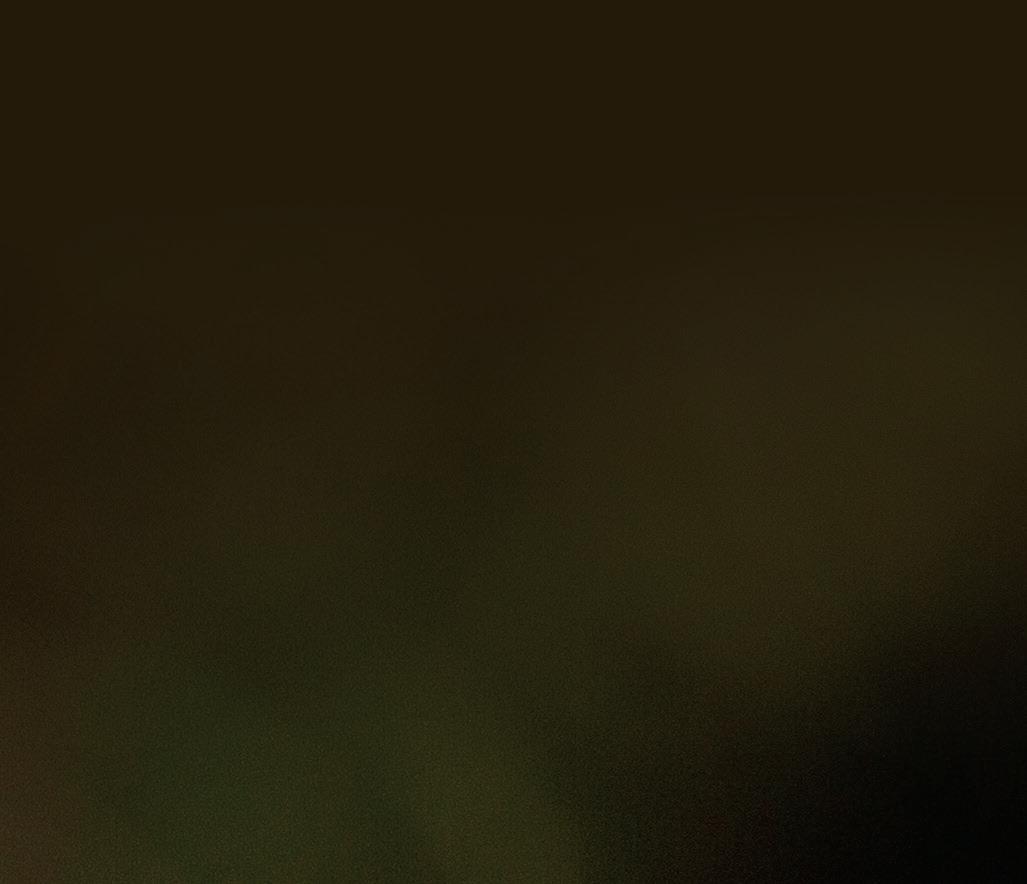


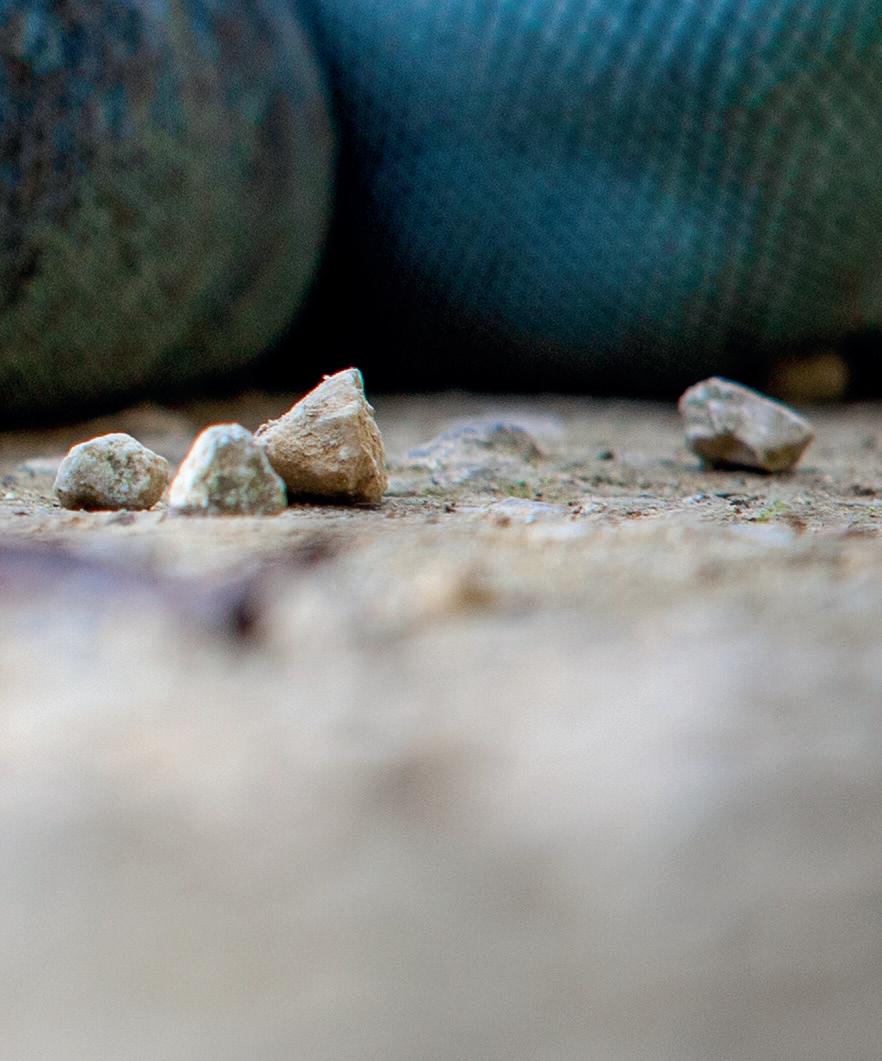
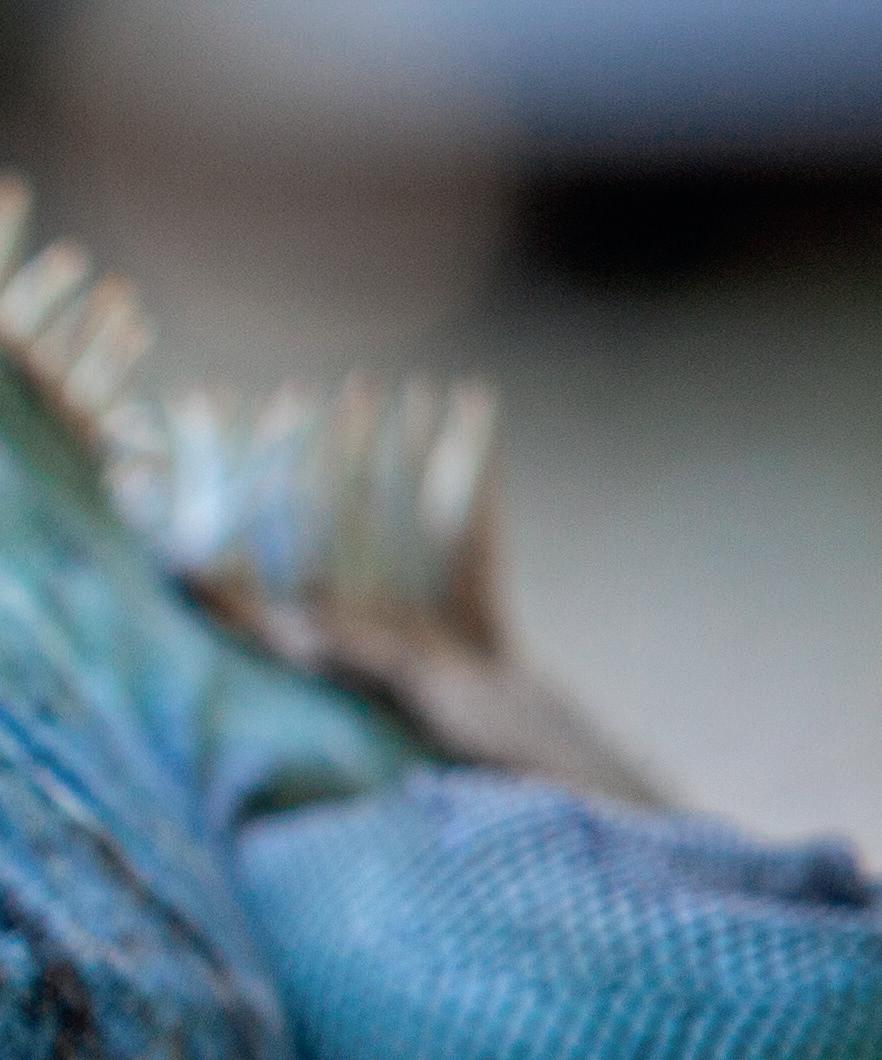
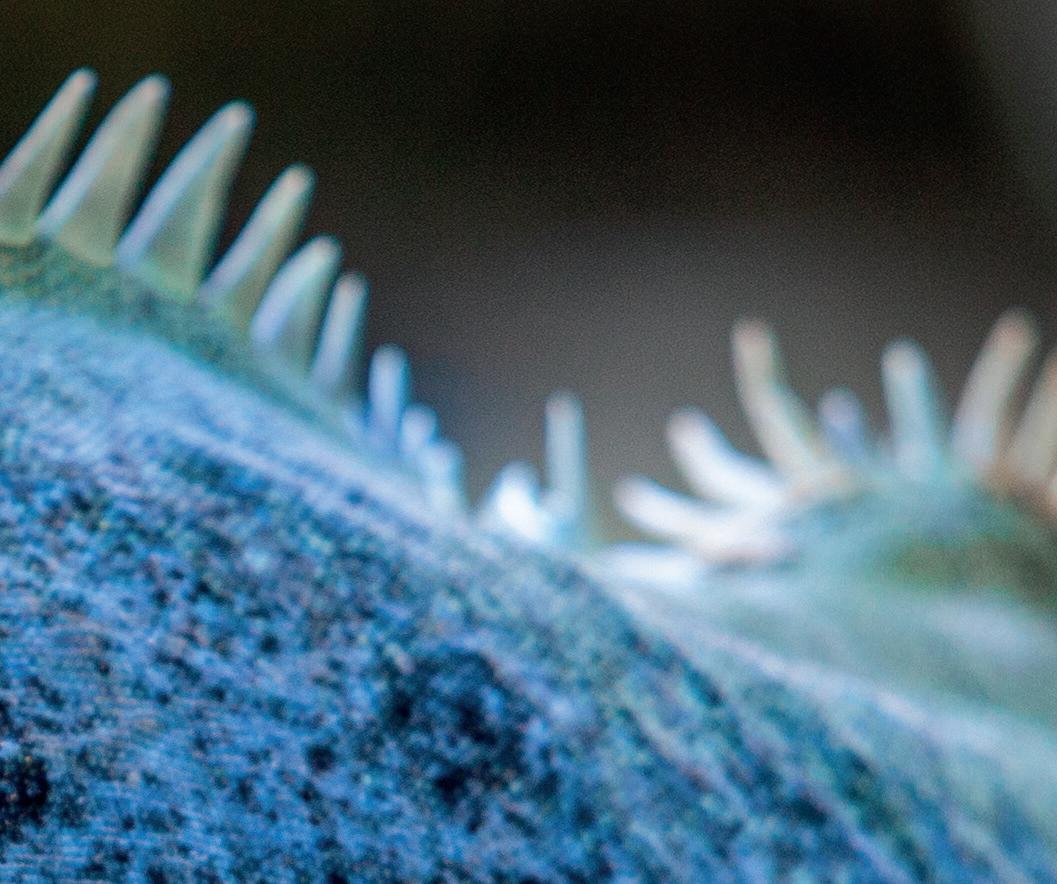
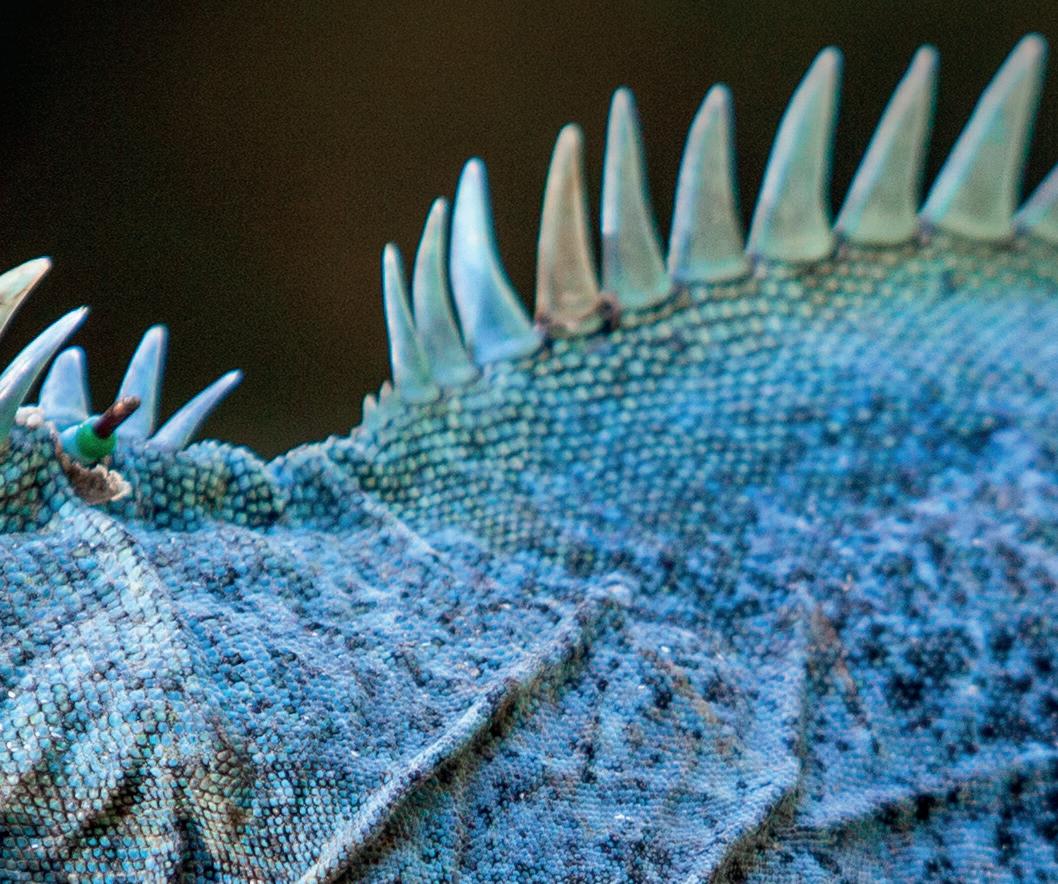
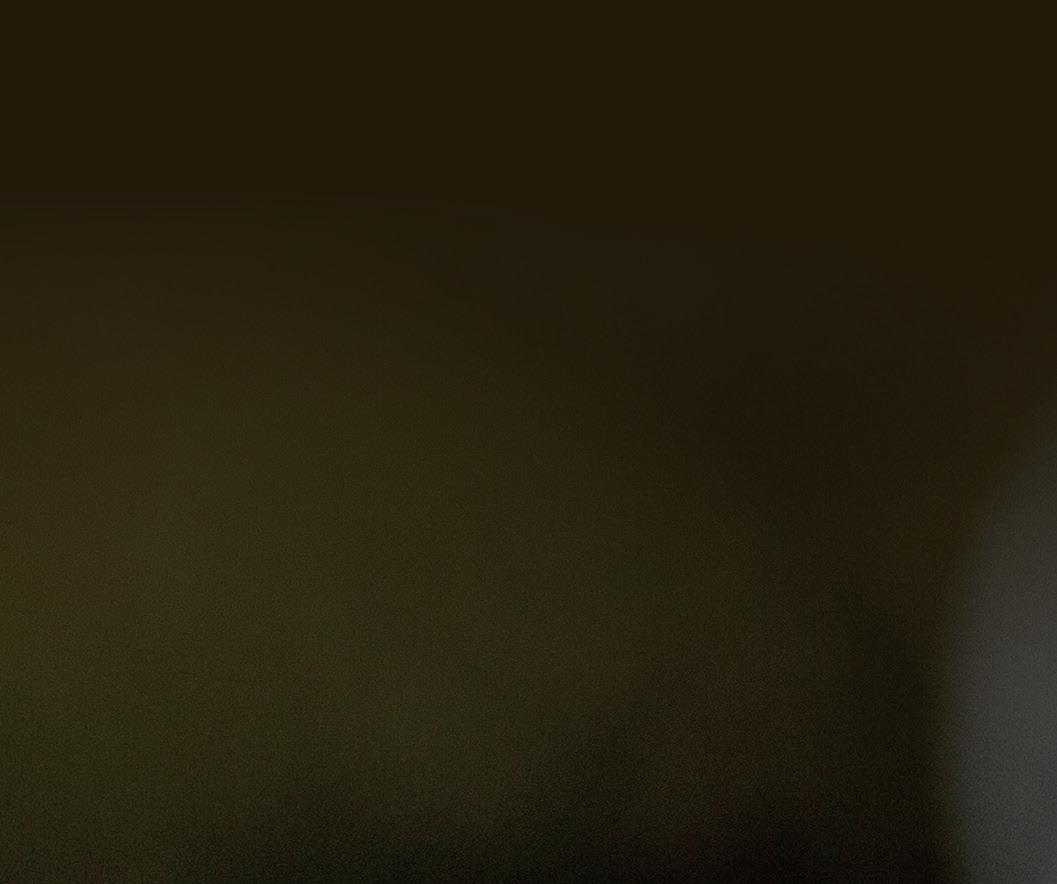
A grand community

Being Grand Caymans most endangered species, ensuring that the local residents are as passionate about blue iguana conservation as possible will help spread the workload. As such, the Blue Iguana Garden Initiative was set up to encourage residents to grow plants which can be used as supplemental foods for the iguanas. Identifying that the development of the island has had disastrous impacts on the wild populations of blue iguanas has allowed the initiative to mitigate some of the potential harm caused by human inhabitants by spreading positive conservation messages.
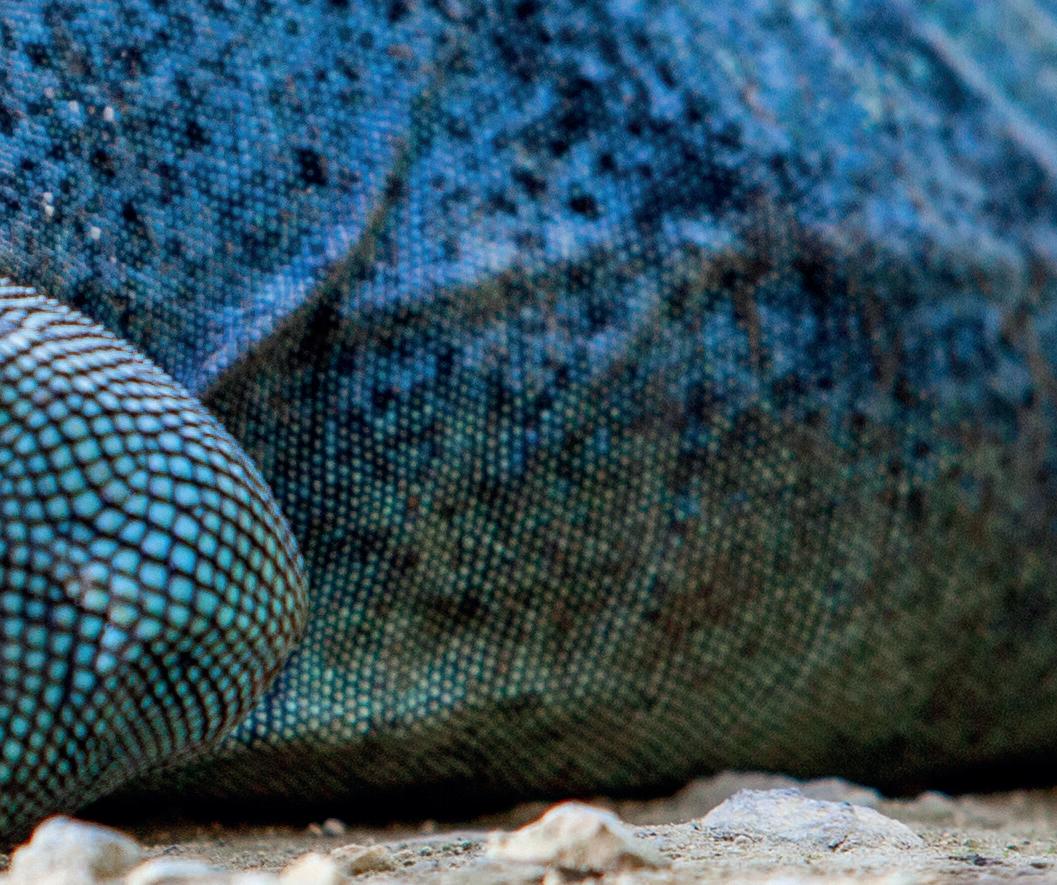
Tourists and residents are also invited to volunteer in the programme. Whether it involves basic husbandry such as preparing foods and cleaning enclosures or skilled labour, the project aims to encourage everyone on the island to be proud of their local wildlife. Numerous campaigns aimed at encouraging responsible vehicle use and preserving the Salinas Reserve and Colliers Wilderness Reserve from disease and predators have already proved successful.
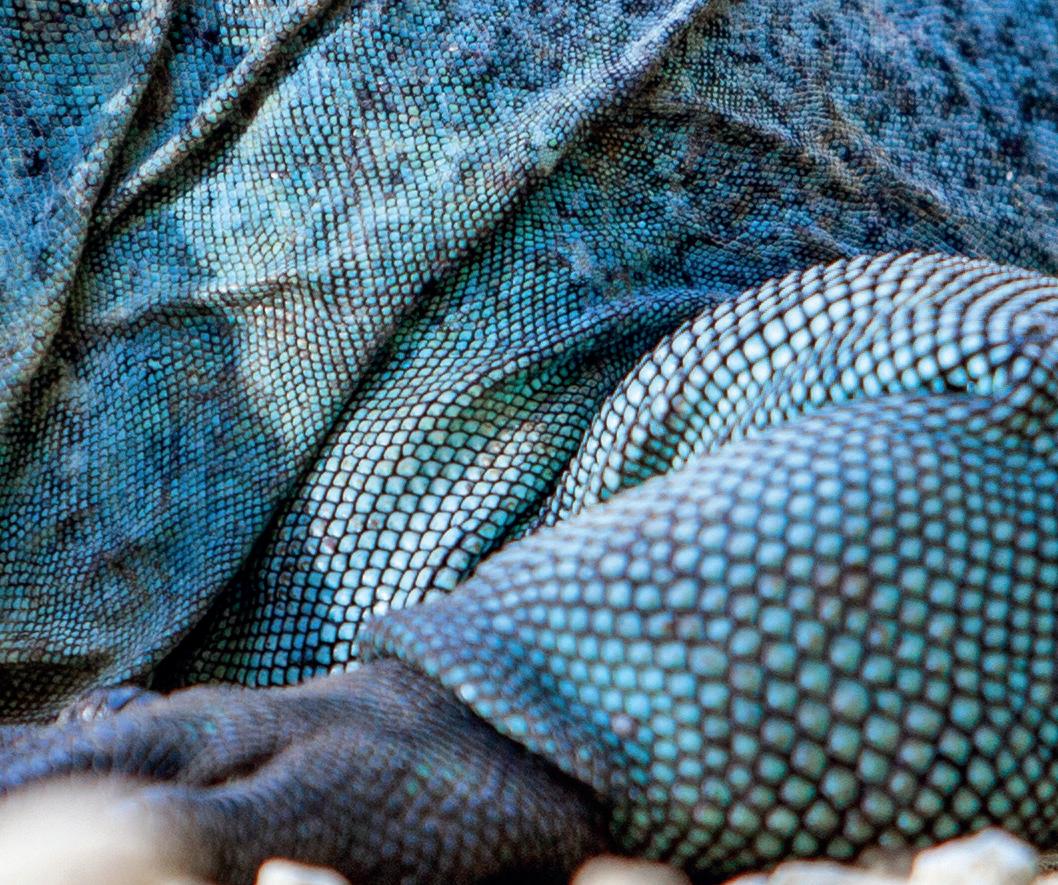
Blue Iguana Conservation also offers tours of their breeding facilities as well as the nearby nature reserves. Having a conservation project that is so transparent allows for tourists and residents to feel fully involved in the progress that is being made. It is no secret that generating public interest for the preservation of reptiles and amphibians is generally more challenging than their mammalian counterparts. Perhaps this approach, which breaks down some of the red tape usually associated with conservation allows for resources to stretch further and visitors to engage with the animals.
Luke continued: “Although Blue Iguana Conservation is a project under the National Trust for the Cayman Islands, the main revenue for the project is through people visiting the Blue Iguana Conservation facility, blue iguana adoptions, private donations and, where we can, we try to gain funding from grant funding bodies. Therefore, our conservation work requires support from the general public, both locally and internationally. The blue iguana is a flagship species here on Cayman and on-island support is, and has been crucial, particularly during the Covid-19 pandemic, in order to create national pride in the endemic blue iguanas. We welcome many school groups to the facility, along with many other public and VIP events, and, of course, facility visitors. International support is also vital due to the potential for higher fundraising amounts, tourism (once Cayman reopens its borders) and assisting with certain expertise, for example, specific veterinary assistance or field equipment.”
“Grand Cayman is a small island and most of the land is privately owned, so without public buying into the project and a desire to preserve the species there is little chance of ensuring that the changes required to mitigate the threats and preserve the iguanas will happen now or be sustained into the future.”
Blue Iguana Day
On Saturday, 8th May 2021, Blue Iguana Conservation (BIC), the National Trust for the Cayman Islands (NTCI) and International partners (from New Zealand to the USA) celebrated the first ever International Blue
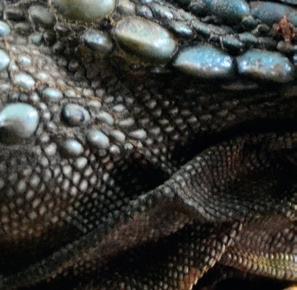
Iguana Day! The family-friendly event was held at the Blue Iguana Conservation facility located next to the QEII Botanic Park. Luke Harding, BIC Operations Manager, who spearheaded this initiative said, “Many people have enquired why it was an international day. Although blue iguanas are endemic to Grand Cayman, the project reach is truly global and has had assistance and input from many individuals and organisations all over the world, who have helped to fight to keep the blue iguana from extinction. Making it an international day was to recognise and celebrate that the efforts have not solely been on-island, and it is also a chance for Grand Cayman to show off to the world the natural treasure that is the blue iguana.”
A long way to go
Although the Blue Iguana Conservation initiative is a story of great success thus far, the threats that face the species are not going anywhere any time soon. In fact, maintaining this success and the continuation of such dedicated individuals and sponsors is a huge challenge. This means that whilst under the supervision of some of the most highly qualified and dedicated herpetologists in the world, the future of the blue iguana is blurred to say the least.
Luke concluded: “The final main challenge is sustaining interest and funding for the length of time required to achieve this goal and beyond. After 30 years of grants, donations and support it can be very difficult to keep finding funding avenues or keep people engaged to donate and support the programme. However, without future support, continued research and positive conservation measures to mitigate the threats, the species will go backwards in the path towards a sustainable wild population.”
Ultimately, sustainable conservation efforts rely on the preservation of suitable environments for the animals to live. While breeding projects can provide that last lifeline and in this case, this has been extremely positive, the existing threats still exist. These include growing infrastructure, feral cats, invasive green iguanas as well as several diseases. While the extremely successful breeding project now means that the island has a second chance to save the blue iguana, developing a relationship whereby humans and nature can thrive is the only true way to guarantee the survival of a species. What happens on Grand Cayman in the future is entirely dependent on this relationship.
For continued updates and to support Blue Iguana Conservation, please visit their website http://nationaltrust.org.ky/our-work/ conservation/blue-iguana-conservation/
